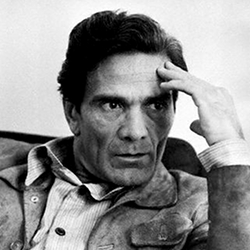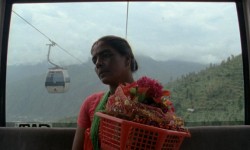
Manakamana Review- NP Approved
Manakamana (2013)
Director: Stephanie Spray, Pacho Velez
Country: Nepal | USA
Genre: Documentary
Official Trailer: Here
Editor’s Notes: Manakamana opens in limited release this Friday, April 18th.
In the grand scheme of things, here’s my microscopic version of the events in this film: there are many things around us that we overlook. If you commute by transit, bike, car, or train, you might go over a bridge everyday. I, for example, cross two bridges and rivers almost daily on my bicycle or on the subway. On the subway commute, I can go from the darkness of the tunnel and then suddenly find the vast valley of the Don spread before me, anchored by the veins of the highway below, and framed by the concrete towers of the city around it. Green unfolds everywhere among this tiny patch of civilization. Fellow commuters often don’t look or miss it because it’s become part of their every day.
It’s like watching a mandala being made. As the colored sand is poured, the chants tell the story of the image being evoked. In Manakamana, as the car trundles on its set path, the stories of the people are told through their faces and gestures.
At TIFF and the grander scheme of things, Stephanie Spray and Pacho Velez’s Manakamana is a macroscopic view of a Nepalese pilgrimage to and from a mountaintop temple via cable car. With the camera is fixed at the center inside the car, the film starts when an old man and a little boy get on to travel to the temple. As they silently journey, we are treated to a stunning view of the Nepalese Valley. It’s about a ten-minute ride. The little boy looks concerned while the old man checks him every so often to make sure he’s all right. As they arrive, the camera goes black, you hear the machinery gears rumble at the station stop and start again, until the next passenger(s) get on to travel back to the start. As the cable car loops, new passengers appear, but there is no definitive narrative. As time passes, some passengers talk to themselves or to each other. Yet something mesmerizing unfolds; a story, in a way, unravels in its images.

It’s like watching a mandala being made. As the colored sand is poured, the chants tell the story of the image being evoked. In Manakamana, as the car trundles on its set path, the stories of the people are told through their faces and gestures. An old generation converses of what used to be along the valley and how, when they were young girls, it took them three days to traverse it. A trio of teenage goth metal heads take photos with their phones, talk about shows, and compose songs. “Nature is a flowerpot for the cable car,” one of them sings. A middle aged woman and her elderly mother eat ice cream bars and laugh as they make a mess. It’s a beautiful mess of smiles and intergenerational exchanges. It’s life in transit caught on film.
Much has been said that watching the film requires tolerance and patience, but there really is no challenge in watching commuters in Nepal. As folks far across the pond, this is what audiences are used to doing in their daily lives, no matter where they are. To move and journey is a universal constraint. We sit in uncomfortable silence with each other or familiar periphery traversing bridges, tunnels, and streets to get to where we need to go. This isn’t a defense of the film, rather this a bit of space for this writer’s commentary: it is important to have patience with the world when you view it, not just in celluloid, but here in the real world. Perhaps, this is what we’re meant to learn, perhaps this is the kind of film that can teach the bloodless-action-attention-weak-world how to train its meditative eye. Whatever it is, Manakamana pulls in the viewer expecting adventure and finding it in vessel built of steel high above a surreal green forest.
Much has been said that watching the film requires tolerance and patience, but there really is no challenge in watching commuters in Nepal. As folks far across the pond, this is what audiences are used to doing in their daily lives, no matter where they are.
Spray and Velez spent a year filming the rides, the people, and assembling it all into this two-hour feat. Considering there is no interaction that can be seen between the filmmakers and their subjects, the piece ends up more like part documentary and part experimental art piece. One thing can be said for sure though, it is a worthy cinematic experience to witness genuine moments in a place that some audiences might not ever get to see.
-
Chris D. Misch
-
Kamran Ahmed
-
Chris D. Misch
-
acharlie






















